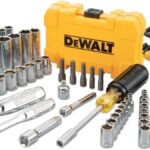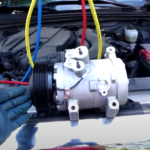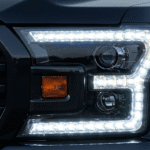
Upgrading your car with body kits is not as easy as it sounds. Especially if you’re just a neophyte in the game.
The sleek and head-turning style that you dream of for your car may look good on paper, but when it’s time for customisation, it may be problematic. That’s because car customisation is more than just about attaching accessories to your car with bolts and screws. There are several deciding factors (like budget and car warranty) that come with upgrading your car.
That’s why you need to consider these factors even before deciding on what body kit you should buy. Before you get quotations from car shops, make sure that you’re the man with a plan.
Below are the three things that you need to tick off first before embarking on your car customising journey.
1. Determine How Much You are Willing to Spend
Your budget will ultimately decide on how your car will turn out. Body kits and other accessories can be pricey. And those are the materials alone. Remember that you still have to pay professional fees for the installation. We hate to say it, but car customisation is not a cheap hobby.
So it’s better if you know that you have the budget for the upgrades and you are willing to spend a certain amount.
Once you’ve set your budget, do your best to work around that amount. This strategy will allow you to look for cheaper materials but are on par with the high-end ones.
It will also help you decide what accessories are your priorities. Because car customisation is not a one-time affair ultimately. You can always prioritise other kits more than the other. Let’s say, you buy front lips online first, then have it installed for your first upgrade. If you’ve got the money again after some time, buy another kit then have it installed. Do this until you’ve completed your dream upgrade.
2. Look for the Best Material for Your Car
Body kits are not made of the same materials. Most kits are made with fibreglass, carbon fibre, polyurethane, and composite materials. You know, the usual suspects.
The most commonly used is the fibreglass, maybe because it’s the cheapest of them all and it possesses qualities that are beneficial to your ride. It’s lightweight so there’s no weight penalty to worry about.
Polyurethane, on the other hand, is not that budget-friendly compared to fibreglass. But this material is much more durable and flexible than the latter. The downside is that polyurethane warps more when exposed to extreme heat.
Keep in mind that when looking for the perfect material, you have to consider your budget, compatibility with your ride, and the qualities of each material.
That’s why you must research the materials first before buying them online. A little legwork can save you a ton of money in the long run so make sure to do your homework.
3. Check Your Car’s Insurance and Warranty
Hate to break it to you guys, but your car’s insurance can make or break your dream upgrades for your ride. Some car insurances, depending on the company, have some limitations regarding customisation or modification of your car.
These limitations are most likely stated in your contract or policies so make sure to check them out.
You can also contact your dealers or insurance companies and consult them regarding their policies about car upgrades. The last thing you want to happen is that you achieve your dream style for your car, but you end up getting disqualified for the insurance and warranty because of the changes you’ve made.








